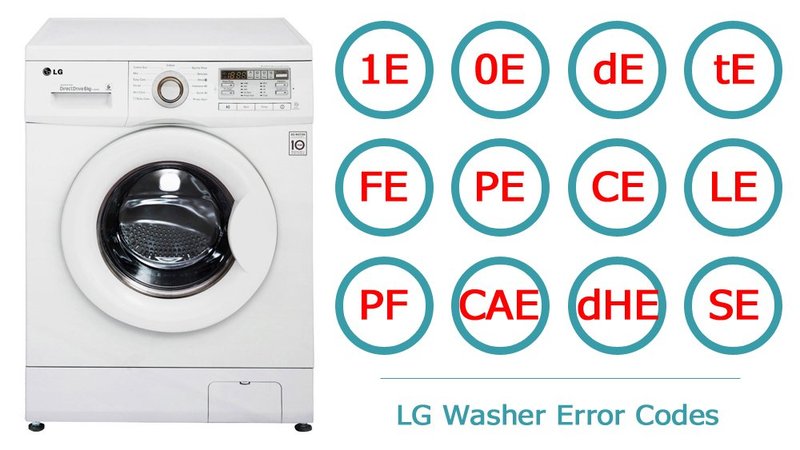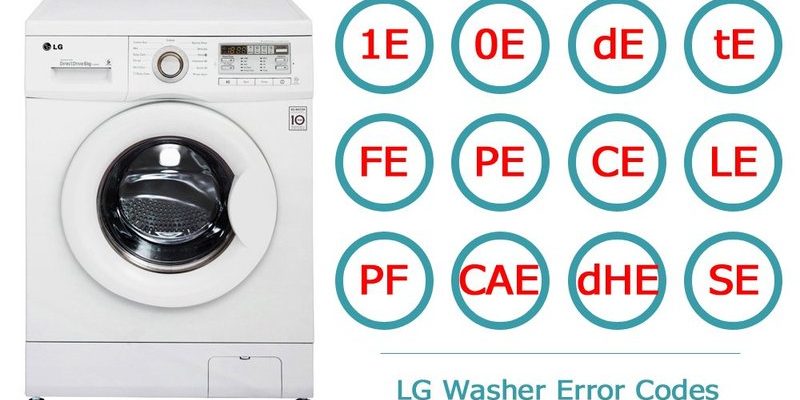
So, what does “HE” mean on your LG washing machine? Essentially, it stands for Heating Error. This indicates that the machine’s heating system isn’t working as it should. Much like how you notice when your home heater isn’t warming up the room, your washing machine knows when it can’t heat the water properly. This might not sound like a big deal, but water at the right temperature is crucial for getting those clothes sparkling clean. Now, let’s dig a little deeper into what causes this hiccup and how you can tackle it.
Understanding the Causes of the HE Error Code
You might be wondering, “Why does this error happen in the first place?” Well, several factors could be at play. An obvious one is that something’s wrong with the heating element itself. This part of your washing machine is like a small but mighty heater, warming the water to the perfect temperature. If it’s faulty, then your machine can’t do its job properly. Just like a kettle with a broken coil won’t boil water, a malfunctioning heating element prevents hot water from being available for your laundry.
But that’s not the only possible cause. Sometimes, the issue isn’t the heater but the thermostat. This device measures the temperature of the water and makes sure it’s just right for washing. If the thermostat is misreading or malfunctioning, it’s like wearing the wrong prescription glasses — it doesn’t see the situation clearly, leading to erroneous adjustments or none at all.
Another common reason could be related to water supply issues. If the water flow is restricted or the water pressure is too low, it halts the proper function of the heating element. Imagine trying to fill a bathtub with a trickle of water — it’s just not going to heat efficiently or effectively. These factors together can trigger the HE error code, signaling you to check what’s going wrong.
How to Fix the HE Error Code on Your LG Washing Machine
Alright, now that we know what could be causing the problem, let’s roll up our sleeves and fix it. First and foremost, start by ensuring your washing machine is unplugged from the power source. Safety first! Once that’s done, inspect the water supply. Make sure the tap is fully open and there’s ample water pressure reaching the machine. This is like checking if the sink faucet is turned all the way, ensuring proper flow.
If the water supply checks out, it’s time to look into the heating element. You might need a multimeter for this step. A multimeter is like a detective’s magnifying glass, helping you see if there’s continuity in the electric current. Set it to the ohms setting and check the heating element for resistance. If there’s none or it’s significantly off from the manufacturer’s specifications, the heating element might need replacement.
But wait, there’s more! Even if the heating element is fine, the thermostat could still be the culprit. Use your trusty multimeter to see if it’s working correctly. If either the heating element or thermostat shows signs of being faulty, you’ll probably need to replace them. It’s a good idea to consult your washing machine’s manual here; it’s like your appliance’s personal diary, providing specific instructions tailored to its needs.
Preventing Future HE Errors in Your Washing Machine
Wouldn’t it be great if you never saw that HE code again? The truth is, with a little care, you can minimize the chances of a repeat performance. First, regularly check your water inlet filters. They’re like the guards at the gates, ensuring debris doesn’t enter and cause blockages. Clean them often to keep things running smoothly.
Additionally, perform periodic maintenance on your machine. This doesn’t have to be as intimidating as it sounds. Simply run a maintenance cycle as recommended in the manual. Think of it as giving your washing machine a well-deserved spa day, keeping it in top-notch condition.
Lastly, if you notice your washing machine is taking longer to heat up or your clothes aren’t as clean as they should be, don’t ignore these signs. Early intervention can prevent more serious issues, saving you from bigger headaches down the line. By understanding your machine and using these tips, you’ll be more prepared to keep it running smoothly — and error-free!
